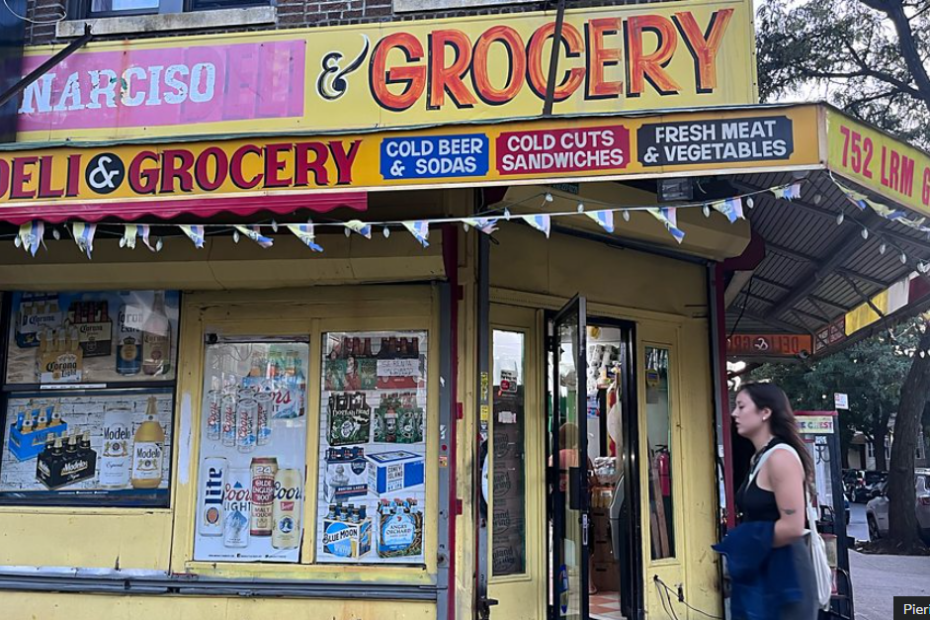Summary
New York City’s bodegas serve multiple roles: they are convenience stores, informal gathering spots, and cultural anchors. Open around the clock, these neighborhood staples provide essentials like coffee, bread, and snacks, while also functioning as social hubs. These small, family-run shops, often open 24 hours and stocked with everything from plantains to Polish beer, reflect the ever-shifting tides of New York’s identity.
Bodegas are instantly recognizable: hand-painted signage—often yellow with red lettering—and handwritten signs advertising Lotto or bottled water. The windows adorned with beer ads or images of sandwiches that look nothing like the real thing. The plump and friendly cat patrolling the narrow aisles. A classic bodega often features hand-painted murals, like symbols and scenes of the Caribbean or tributes to local residents who passed away. A bodega can never be mistaken for anything else.
Origins in Latin America
The word “bodega” comes from the Spanish term for “wine cellar” or “storeroom,” but its cultural DNA stretches back further. During the Moorish occupation of Spain (711–1492), Arabic influences introduced concepts of communal markets and small-scale trade. After the Spanish colonization of the Americas, the term evolved to describe general stores that sold goods to rural and urban populations.
In the 19th and early 20th centuries, bodegas became central to daily life in Puerto Rico, the Dominican Republic, and Cuba. These stores were often family-run, offering not just food but credit to neighbors in times of need. They stocked region-specific items alongside imported Spanish goods like olives and sardines. This model of commerce—rooted in trust, cultural familiarity, and accessibility—laid the groundwork for what would later emerge in New York City.
Welcome to New York City
The term “bodega” took hold in New York City by the ’50s as Puerto Rican migrants settled in NYC after World War II. Fleeing economic hardship and largely attracted by factory jobs, they moved into crowded tenements and public housing in long-standing, working-poor, immigrant enclaves. Downtown, Puerto Rican and other Latino residents transformed Alphabet City into Loisaida (a Spanglish rebranding of “Lower East Side”), where bodegas emerged as lifelines. These stores bridged old and new worlds, serving spices and foods from home, alongside American staples. Unlike the pushcart markets of earlier Jewish and Italian immigrants, bodegas became permanent fixtures—part grocery, part social hub—where neighbors traded news and recipes, their shelves reflecting the diversity of diasporic life.
By the 1960s, the Lower East Side had one of the highest concentrations of bodegas in the city. Dominican migrants, escaping political turmoil under the Trujillo dictatorship, carved out a corner of NYC for themselves, like all previous immigrant groups. And like their Puerto Rican neighbors, Domincans faced a longing for foods and ingredients from their tropical homeland.
While Puerto Rican and Dominican communities laid the foundation for NYC’s bodega culture, Yemeni and other Arabic immigrants began arriving in significant numbers during the 1970s and 1980s, fleeing political unrest, economic instability, and civil war in Yemen Bringing their culinary traditions and entrepreneurial spirit, they opened halal bodegas that catered not only to Muslim residents but also to a growing appetite for diverse, globally influenced foods. These stores introduced NYC to “exotic” spices and dishes, while transforming store counters into communal dining spaces.
Gentrification and a New Challenge: The 1990s–Today
As the Lower East Side caught the attention of developers and luxury high rises started springing up in the late ’90s, rising rents threatened longtime businesses. Hundreds of businesses, along with several bodegas and thousands of long-time residents, have since been priced out.
Chains like 7-Eleven, rising rents, and changing populations have decimated small shops. The average retail rent in the Lower East Side rose by 62% between 2009 and 2019 (according to Crain’s New York Business).
As the New York City and the Lower East Side continues to evolve, these shops remind us that community isn’t just built—it’s stocked, shelf by shelf, by real people and real families.
What’s your favorite bodega (past or present)? Drop a comment below!
[Featured image courtesy of Pierina Pighi Bel/BBC]

Eric is a 4th generation Lower East Sider, professional NYC history author, movie & TV consultant, and founder of Lower East Side History Project.
